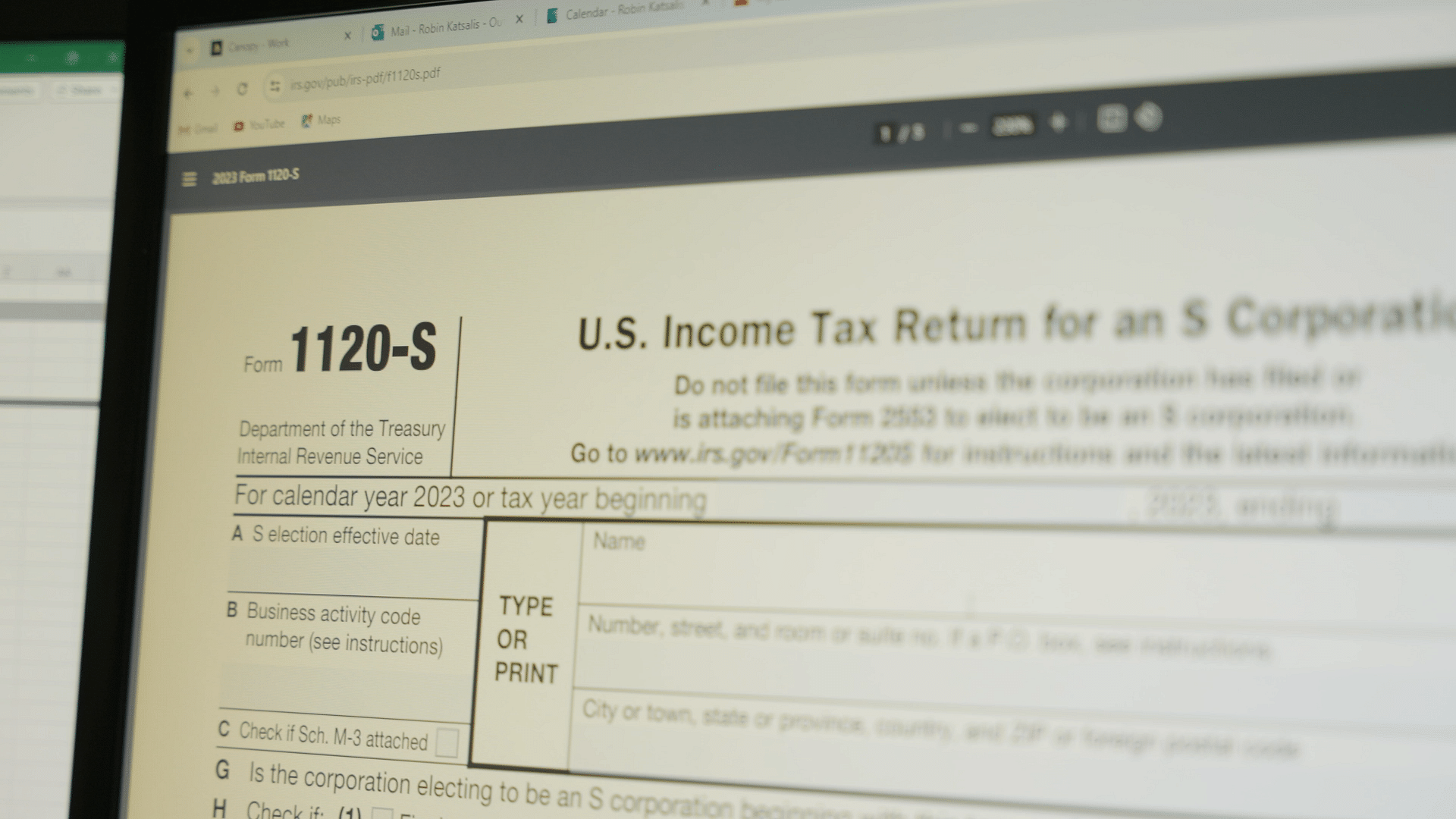
Filing Small Business Taxes for the First Time
Apr 16th, 2021
Owning your own business can come with enough challenges, but if you're self-employed, work with independent contractors or even employ a small workforce, one challenge will always be the same: filing your yearly tax return. If you are a new business owner who's never filed a tax return before, navigating your yearly tax obligation can be especially daunting, but there are a few simple first steps you can take to better understand the process.
Understanding Small Business Taxes: What Is a Tax Return And Who Has To File a Tax Return?
Simply put, a tax return is a document filed with a local, state, or federal tax authority declaring your income, expenses, deductions, and other important information about your business. Filing business tax returns allows an individual or company to calculate how much they owe, or to request a refund for overpaid taxes. Every small business needs to file a tax return at least once per year (some may have to file quarterly, but more on that later) but the classification of your business will affect what type of return you file, and, ultimately, how much you'll pay.
Small businesses are typically referred to as "pass-through" entities by the Internal Revenue System and other tax authorities and are taxed at an individualized rate instead of the flat rate used to tax large corporations. Pass-through entities include sole proprietorship, Limited Partnerships and Limited Liability Partnerships (LP's and LLP's), Limited Liability Companies (LLC's), and S Corporations. These classifications are determined by many different factors, so it's important to clarify what type of business you own before filing. The IRS can officially determine the classification of your business upon request, and the tax rate for small businesses such as these is usually the same as the business owner's individual tax rate.
Getting clear on your tax obligations is a crucial first step for any business owner, and if you lack the time it takes to learn the process or are unsure of where to begin, it may be worth it to hire a tax professional to explain how to file taxes for the first time, and where to mail your federal tax return. If you plan to hire someone to prepare your return for you, however, ensure that you choose a service or professional with proper certifications and reputable background. Tax professionals like Certified Public Accountants or Registered Tax Return Preparers will have met the necessary minimal qualifications to legally collect and prepare tax information, and should be able to provide proof of their qualifications when asked. The IRS advises that business owners first ask any prospective tax professional for their certification number, as well as things like:
- Inquire about service fees and avoid preparers who take a percentage of your refund or make exorbitant claims about the refund amount they can secure.
- Research the preparer's history and company reputation with resources like the Better Business Bureau, online reviews, or trusted referrals.
- Review all materials you'll be providing to the preparer, and thoroughly review the return before it is filed. Be sure to never sign a blank tax return.
When meeting with a qualified tax preparer, bring any documents relating to your expenses and profits, including: receipts, work orders, freelancer or employee contracts, or expense reports. All taxpayers are legally responsible for the accuracy of their tax return, even if it was prepared and filed by someone else. A certified tax professional can be a huge asset to a new business owner, but ultimately, filing a tax return can be a straightforward task with accurate record-keeping and the right tools.
How To File Taxes For The First Time As a Small Business

Small business owners should first check with government authorities about any state or local business taxes they may also have to pay, but typically, small businesses will have to pay income taxes and employment taxes at the federal level. If you are filing as a Sole Proprietor or LLC, you will use a form called a Schedule C attachment to report your yearly earnings and expenses. Schedule C forms are filed as attachments to your personal tax return. A Schedule C attachment has five parts, but you can calculate the amount you'll be liable to pay taxes on by completing parts one and two: listing your income and gross profit, and subtracting all expenses to reach your net income.
Self-employed individuals will need to file a form called a Schedule SE, which is used to calculate the amount you'll owe for self-employment taxes. If you make a net income of over $400, you must include this form with your Form 1040 Individual Income Tax Return. However, if you make additional income on which you already pay Social Security taxes, you may be liable to pay less on your self-employment tax.
One important tax for most small businesses is called the Estimated Tax, which, unlike a yearly tax return, needs to be filed once per quarter. If you expect to owe less than $1,000 in taxes, you need to pay an Estimated Tax, wherein you will estimate how much taxable income you expect to make in a year, and then divide that number by four. You will then send that amount to the IRS by the quarterly tax deadline. Estimating your yearly income can be difficult, especially if you own a new business, but starting by examining your income for the month can serve as a baseline for a yearly sum. It's also better to overpay these taxes throughout the year because a properly filed tax return will lead to a refund of overpaid taxes after the yearly filing deadline in April.
How Do Tax Deductions Work?
Along with your profits and expenses, you'll also decide which deductions to claim to decrease your tax liability. Deductions are offered for many reasons and can happen at the local, state, and federal levels. They are mainly offered to encourage businesses to grow, or engage in community building services by reducing the overall amount of taxable income business owners report on their returns. Business deductions are different from, say, personal deductions, like having dependent children or owing interest on student loans.
Some common small business deductions include: having a home office and buying supplies for that office, advertising and marketing expenses, travel, and meals. One of the most effective tax deductions for a small business is deducting the cost of travel when using a vehicle for business reasons. There are two ways to do this:
- Use the standard mileage rate by adding up all the miles you drove for your business throughout the year and multiply that number by the IRS's standard deduction rate. The rate is currently 56 cents per mile, meaning that over half of your total mileage can be tax deductible.
- File the full vehicle-related expenses with strict record keeping, including how much is spent on fuel, tune-ups, repairs, and registration. This provides more detailed deductible expenses than the standard deduction.
Small business owners operating from their home may also qualify for deductions related to mortgage, utilities, repairs, and depreciation. As mentioned earlier, a home office can qualify as a deduction, but the IRS has strict rules as to what constitutes a home office. The IRS currently allows you to deduct five dollars for every square foot of your home office, up to 300 feet. However, this is only if the office is used for business purposes regularly and doesn't double as recreational or living space. Make sure you are in compliance with the IRS guidelines before you attempt to deduct anything relating to your home as a business expense. Business expenses and personal expenses must be filed separately, and it's important to keep accurate records of both. Reporting personal expenses as business expenses is considered a type of fraud and is punishable by fines and even legal prosecution.
How To Calculate Tax Return

If your business will file its return using a Schedule C attachment, you can estimate your yearly tax cost by subtracting your yearly expenses and deductions from gross income for the year. Multiply that net amount by your own individual tax rate (check with the IRS to see what tax bracket you fall under in a given year) and you will have your yearly tax liability.
If you are filing under a Schedule SE, the calculation is slightly different and more simplified. After finding your business' net income for the year, multiply that number %92.35, and then multiply that number by %15.3 (the current self-employment tax rate).
Don't Let Deadlines Sneak Up On You
The typical year-end tax deadline is April 15th. However, due to the Covid-19 pandemic, the IRS announced earlier this year that the fiscal year-end tax deadline for 2020 will be extended until May 15. For quarterly estimated tax deadlines, the filing deadline is almost always two weeks after the end of the last financial quarter. Meaning that taxes for January 1st through March 31st will need to filed by April 15, April 1st through May 31st's deadline is June 15th, June 1st through August 31st is September 15, and September 1st through December 31st is January 15th of the following year. Pay close attention to all tax deadlines, especially if you are planning on contacting someone to prepare your returns for you, as tax preparation services tend to get busier as deadlines approach.


Let’s Help Eliminate Your Stress
If you choose Appletree Business Services for your bookkeeping, payroll or tax needs, you’ll find that good things begin to happen in your business. Your common financial challenges will become simple with a clear map to create your ideal situation. More than that, we’ll identify your “typical” stresses and help make them go away.